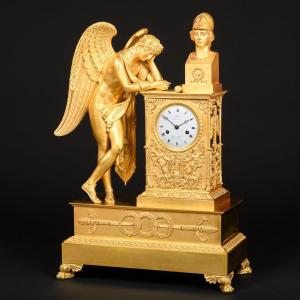The left part of the clock is dominated by the impressively large and finely sculpted and chiseled figure of the Génie of war. He wears Roman soldier’s sandals and on his head he carries a garland of olive leaves awarded as a token of victory. The Génie is looking pensively at a paper scroll on which he is writing. In front of him, on top of the clock case, we see the bust of Athena. She wears her soldier’s helmet with ram’s heads on the sides.
The right part of the case, which houses the clockwork, is unusually richly decorated, underlining the importance of the clock’s design. The ornamentation on the clockwork case symbolizes triumph or victory. For instance, on the front of the clockwork case we see a festive scene, with musical instruments. Further, the right side of the clockwork case has an ornament of a torch with the fire of victory. Also the main clock case expresses the theme of victory, with two winged swords and three laurel wreaths.
The Makers Of This Empire Clock “Génie Inspired By Athena”
Claude François Rabiat
The case of this clock carries the signature of Claude François Rabiat on two interior parts of the case (see last photo). Claude François Rabiat (1756-1815) was a foundry-chaser, know for his sculpting, who received master in 1778. He was very famous and worked mostly with top bronziers like Thomire, Feuchère, Ledure and Galle.
Pierre-Victor Ledure
Ledure, born in Paris in 1783, was the son of Laurent Ledure and Marie-Marguérite née Lainé who died when he was only five in 1788, shortly before the French Revolution. Ledure was apprentice under the renowned bronzier, André-Antoine Ravrio (1759-1814). He received many important commissions during the Empire period, enjoying the patronage from a wealthy international clientele. Today one can find examples of his work in many important private and public collections including the Museo de Reloges at Jerez de la Frontera, the Palais Vienna in Madrid, the Royal Pavilion at Brighton and also the British Embassy in Paris.
Ledure supplied a number of leading Parisian clock makers with cases, among whom was Claude Hémon, who made the present movement. Movements by Hémon are known to have also been used by Pierre Philippe Thomire. Claude Hémon started as an apprentice in 1770 and was active as a maître horloger in his workshop at the rue Saint-Martin from 1812 to 1820.
Details Of This Empire Clock
The movement has a white enameled dial which carries the signatures “Ledure, Bronzier à Paris” and “Hémon Horloger”. A pair of blued steel Brequet style hands show the hours and minutes on the dial with Roman numerals. The eight-days going movement has a wire suspension pendulum. It has a twin-barrel movement with count wheel strike on a bell. It strikes the hour and half hour on it’s bell. The clock is in a excellent and perfect working condition. Also, it has recently been cleaned and serviced by a professional clock maker. The clock comes complete with its pendulum, key and bell.
France, Empire period circa 1812.
Dimensions
66 cm high, 50 cm wide and 23 cm deep.
The Génie Of War
The Génie of War served as inspiration for other artists too. For instance, French sculptor Pierre-Jean David (12 March 1788 – 4 January 1856) made a bas-relief sketch for the monument to General Foy with the Génie of War and the Génie of Eloquence. David adopted the name David d’Angers, following his entry into the studio of the painter Jacques-Louis David in 1809 as a way of distinguishing himself from the master painter. Further, lithographer Eugène Marc made a lithograph with the Génie of War and the Génie of Fortifications as a design for a, never realised, fountain for the Bastille.
Literature
See our website for more detailed photos:
https://apolloartantiques.nl/product/monumental-empire-clock-genie-inspired-by-athena-by-ledure-rabiat/
We send this article worldwide, professionally packaged, with registered and fully insured shipping at a fair price.




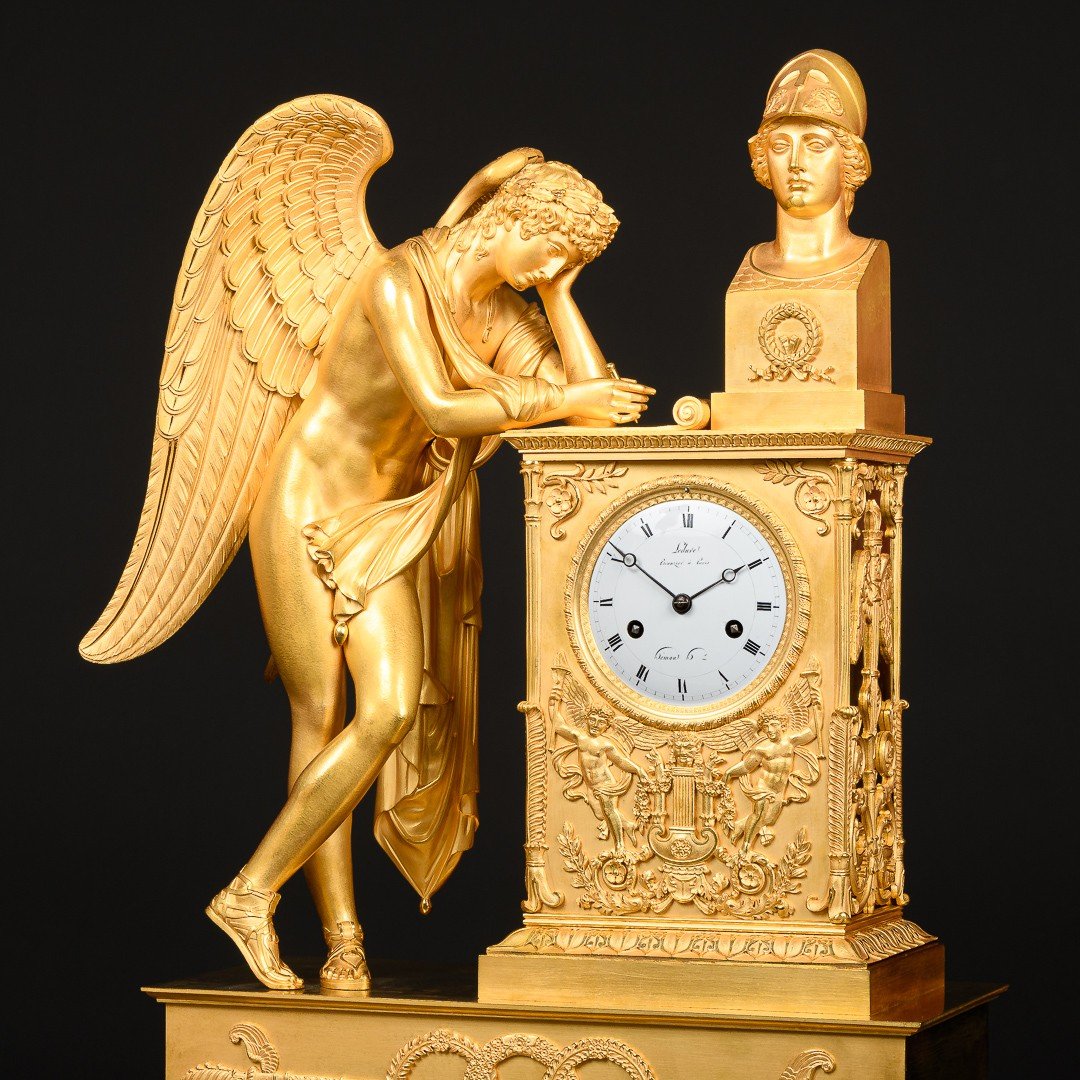

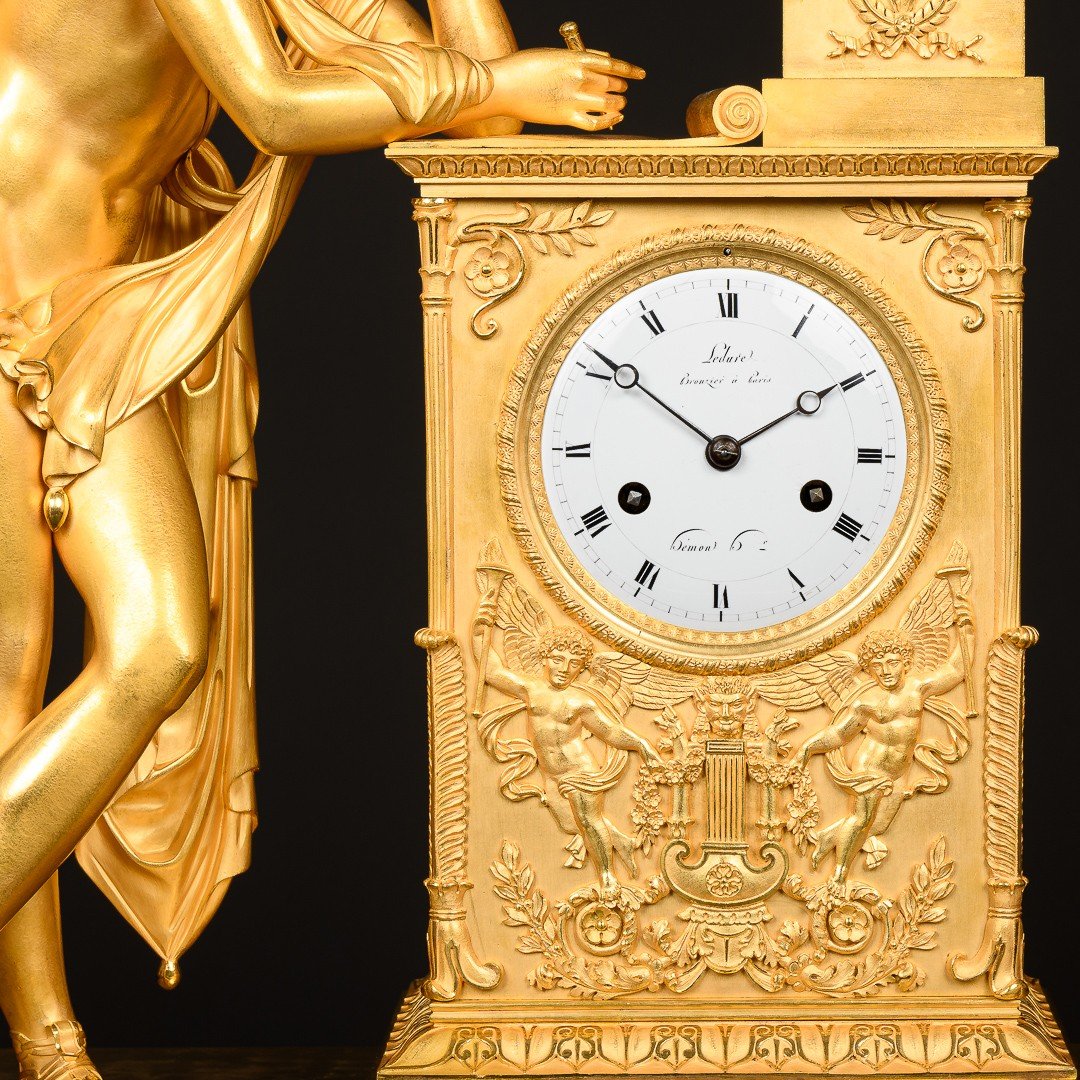

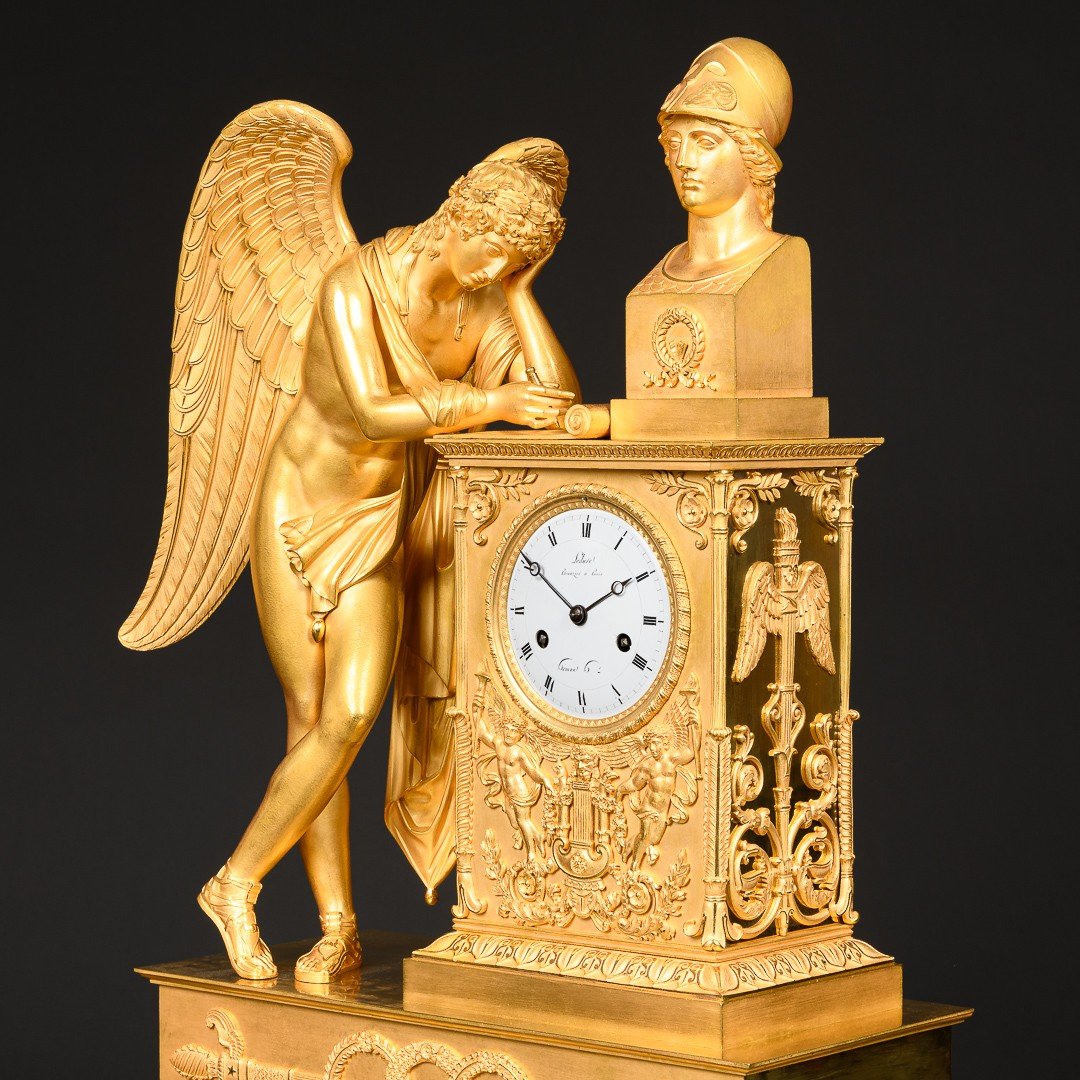


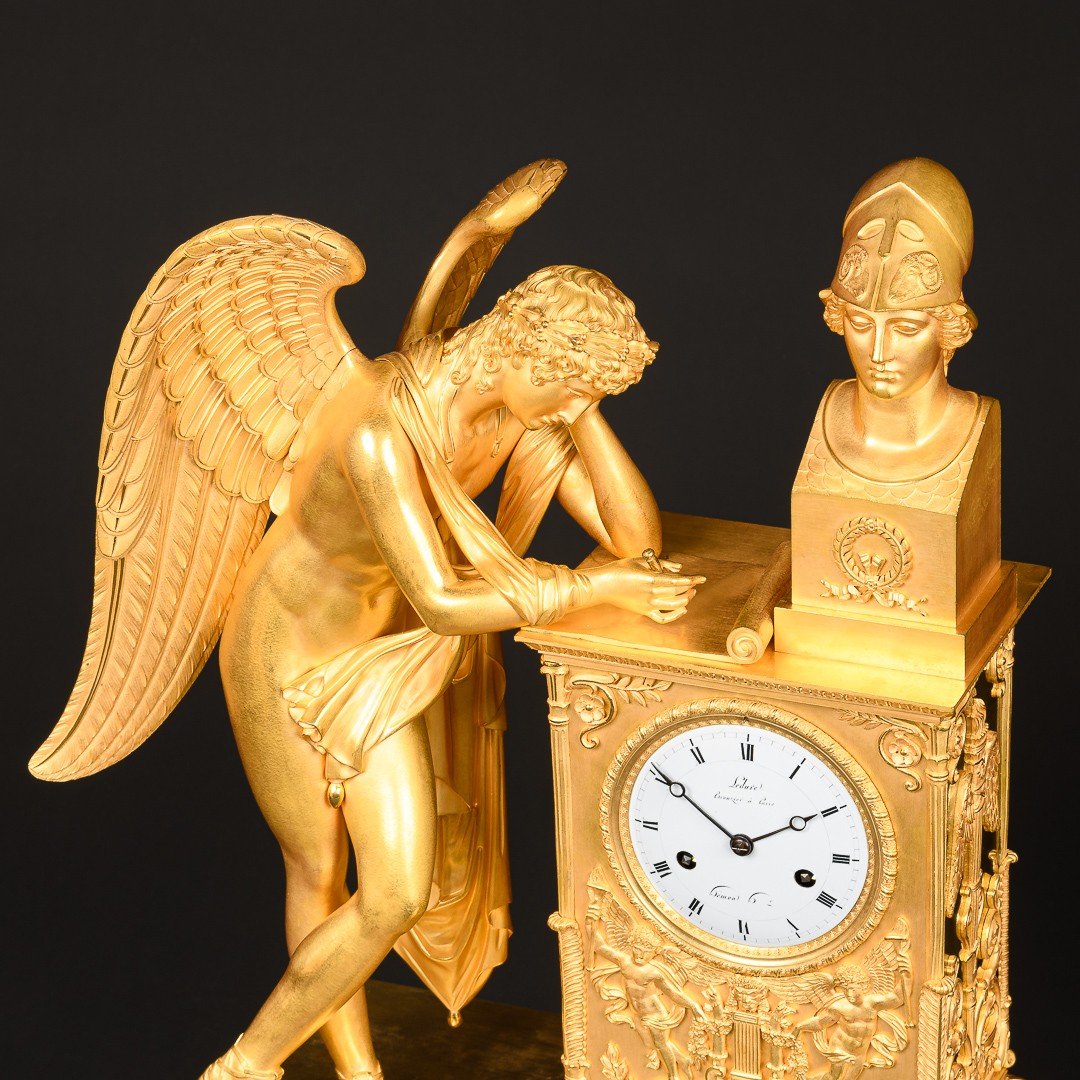

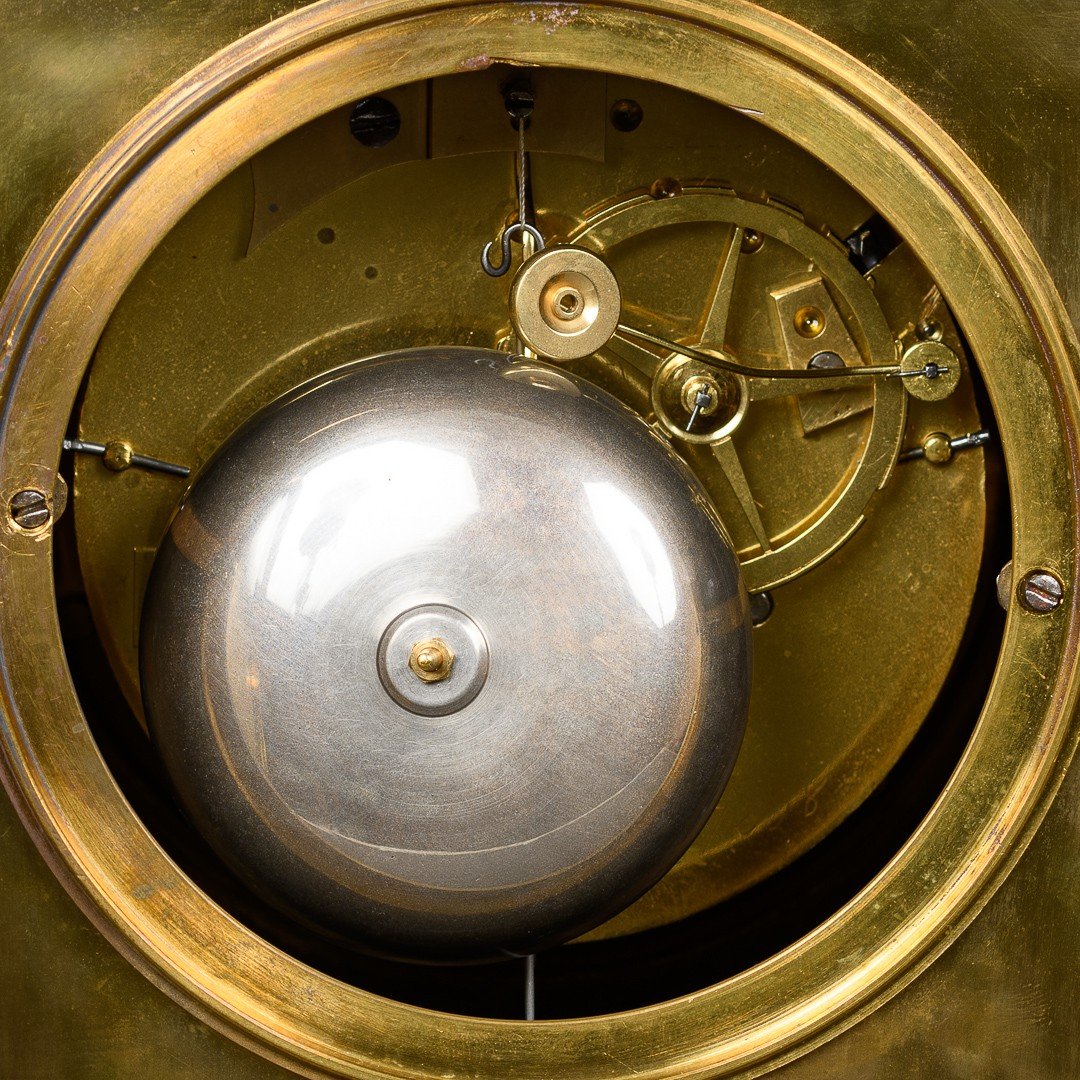
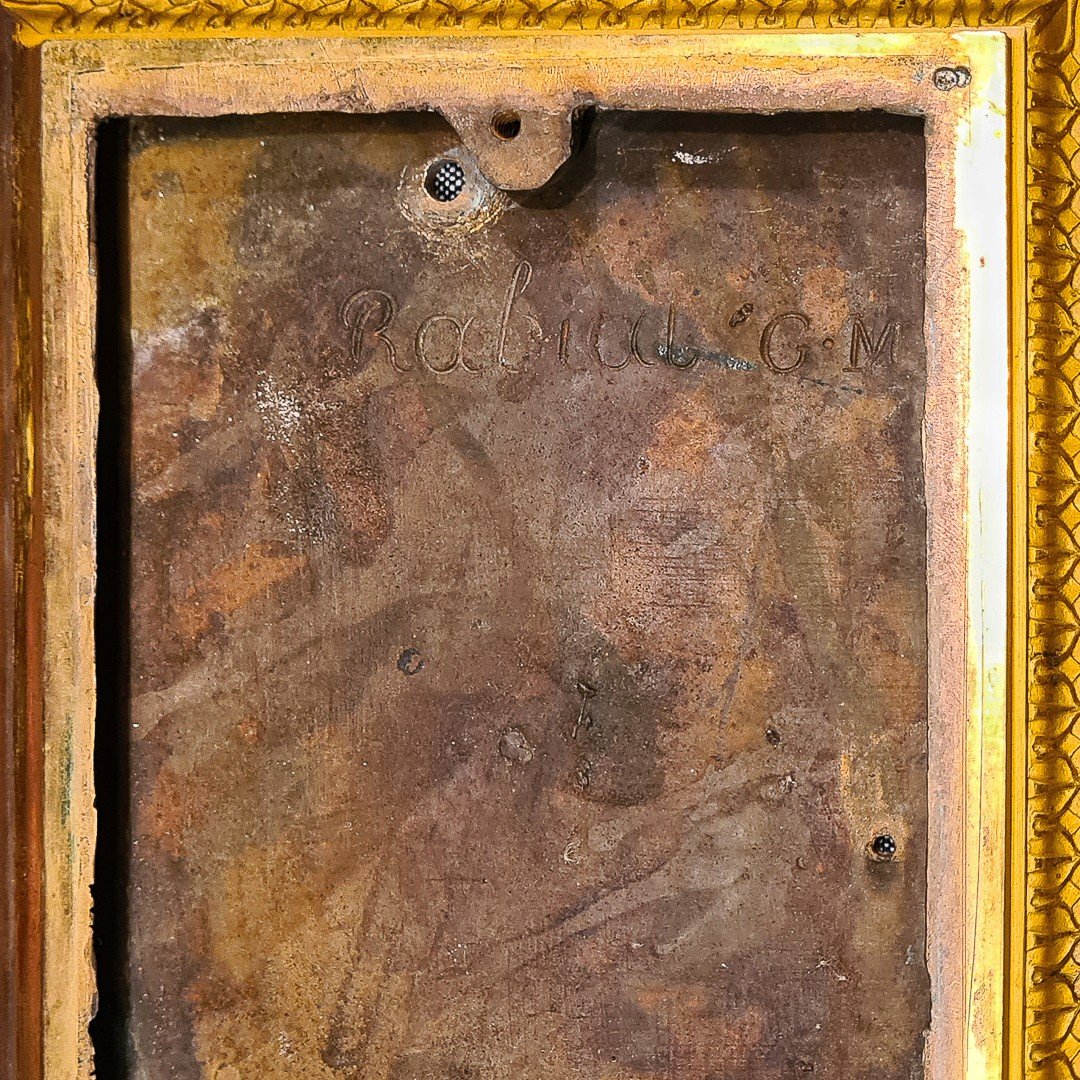



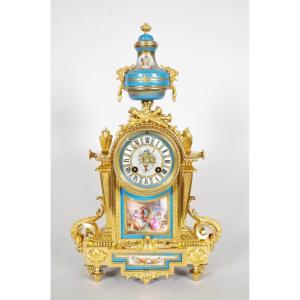

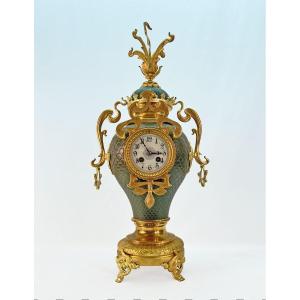


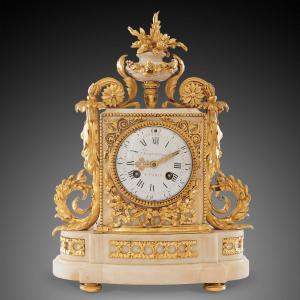



 Le Magazine de PROANTIC
Le Magazine de PROANTIC TRÉSORS Magazine
TRÉSORS Magazine Rivista Artiquariato
Rivista Artiquariato
